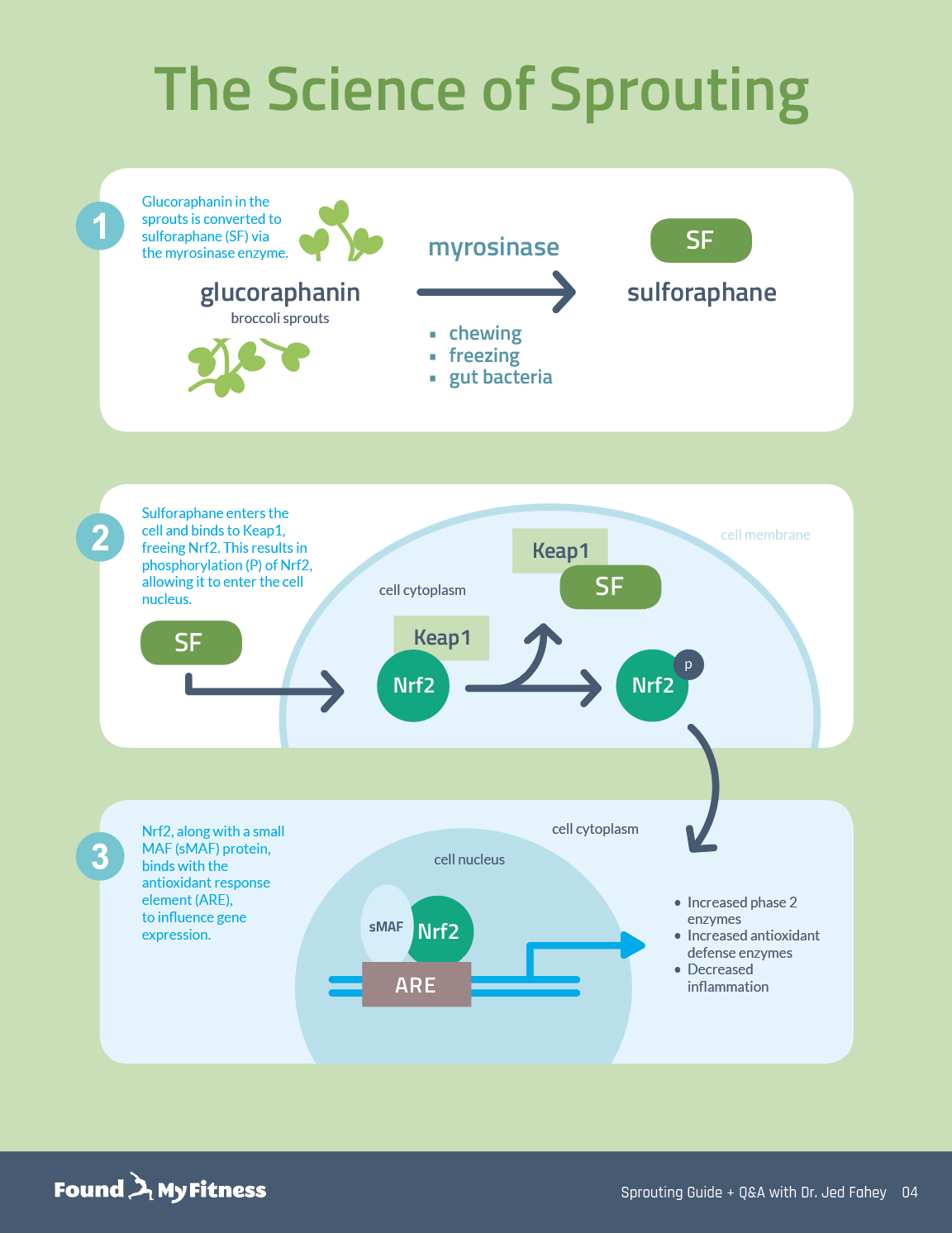What is the best way to store broccoli sprouts? | Jed Fahey
Enter your email to get our 15-page guide to sprouting broccoli and learn about the science of chemoprotective compount sulforaphane.
Broccoli sprouts are concentrated sources of sulforaphane, a type of isothiocyanate. Damaging broccoli sprouts – when chewing, chopping, or freezing – triggers an enzymatic reaction in the tiny plants that produces sulforaphane.

Get the full length version of this episode as a podcast.
This episode will make a great companion for a long drive.
When broccoli sprouts are two to three days old, they should be stored in the refrigerator to slow their growth and to prevent the growth of any bacteria that might be on the young plants. Large batches of sprouts can be frozen and stored for up to one month for the best quality. In this clip, Dr. Jed Fahey describes the best way to store broccoli sprouts.
[Dr. Patrick]: The last question in this section has to do with storing broccoli sprouts. So once they're grown in a big batch...if you grow them in a big batch, sorry, what's the best way to store them? The freezer, the refrigerator? How long can they be frozen, or how long can they be refrigerated and still be potent?
[Dr. Fahey]: Yeah. So good question. You grow them, how do you harvest them? Harvesting is taking the jar... This jar has water, but this is one of my sprouting jars. You take this jar and you put it in the refrigerator. What does that do? It slows the growth rate of the sprouts down to a very, very slow crawl so they don't increase in size very much.
You would leave them in the refrigerator, I leave them in the refrigerator, for a short time, a few days, two or three days. Only because after that time there's more and more risk that whatever bacteria are associated with those sprouts when you grow them are going to start to proliferate. They get sort of rank and grungy after, you know, certainly a week in the refrigerator, in my experience. And you've certainly seen that if you've bought sprouts in the grocery store, they get...you know, sometimes half of the...or three-quarters of the sprouts in the sprout...the little tiny sprout part of the supermarket are rank and I wouldn't want to touch them. They just spoil very quickly.
If you're going to keep them for a long time and you make a large batch, by far the easiest way to preserve them, I think, is to just spread them out on a cookie tray or, you know, a baking tin, put waxed paper on it if you want, and quick-freeze them. And then when you quick-freeze them, you can bundle them and put them in a bag or a container, and then you can keep them for, you know, weeks or even months. Myrosinase will remain active. I mean we haven't done kilo curves to see how many weeks of freezing broccoli sprouts in a home freezer will work, but home freezers do have a freeze thaw...or a defrost cycle and that may actually allow the sprouts to keep on sort of thawing a little bit and myrosinase may activate, and then you may sort of use it up to be sort of the 30,000-foot view of what might happen there. So I wouldn't keep them for more than a month or two in the freezer, but yeah.
An essential mineral present in many foods. Iron participates in many physiological functions and is a critical component of hemoglobin. Iron deficiency can cause anemia, fatigue, shortness of breath, and heart arrhythmias.
A chemical that causes Parkinson's disease-like symptoms. MPTP undergoes enzymatic modification in the brain to form MPP+, a neurotoxic compound that interrupts the electron transport system of dopaminergic neurons. MPTP is chemically related to rotenone and paraquat, pesticides that can produce parkinsonian features in animals.
A family of enzymes whose sole known substrates are glucosinolates. Myrosinase is located in specialized cells within the leaves, stems, and flowers of cruciferous plants. When the plant is damaged by insects or eaten by humans, the myrosinase is released and subsequently hydrolyzes nearby glucosinolate compounds to form isothiocyanates (see definition), which demonstrate many beneficial health effects in humans. Microbes in the human gut also produce myrosinase and can convert non-hydrolyzed glucosinolates to isothiocyanates.
Get email updates with the latest curated healthspan research
Support our work

Every other week premium members receive a special edition newsletter that summarizes all of the latest healthspan research.





































































